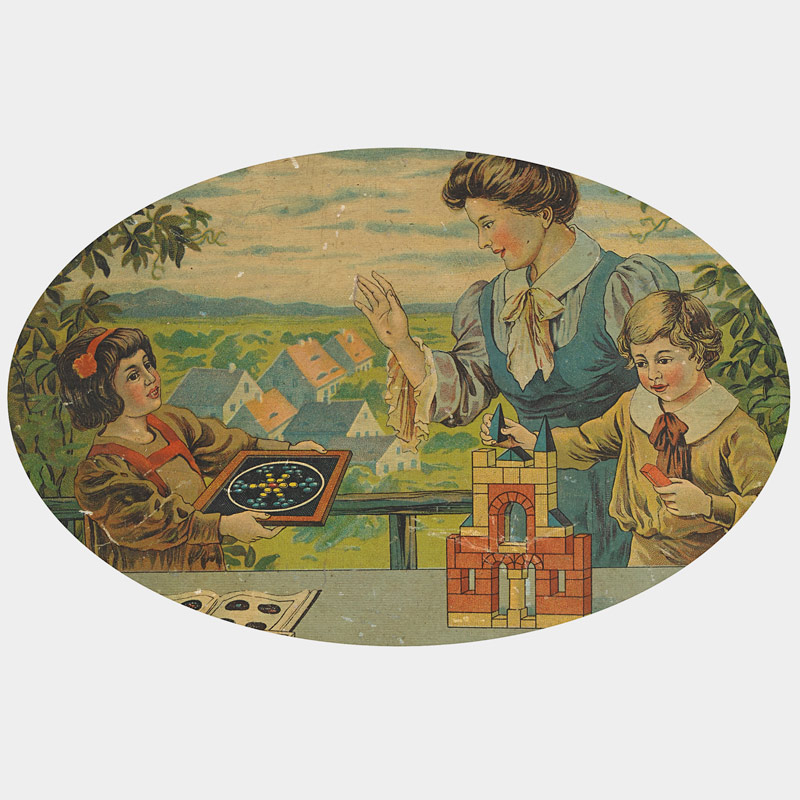From the second half of the 19th century, the child was given increasing pedagogical attention and at the same time was opened up as a new consumer group. Influenced by the reform pedagogue and kindergarten founder Friedrich Wilhelm August Fröbel (1782 - 1852), so-called "domestic activity games", which also extended to the field of color, boomed. In direct reference to Froebel, the wickerwork with colored paper strips as well as the pegging and placement games with colored tiles can be seen. There were also games with liquid paint for spraying and painting, to which the color spinning tops, which were more strongly influenced by color theory, were added later.
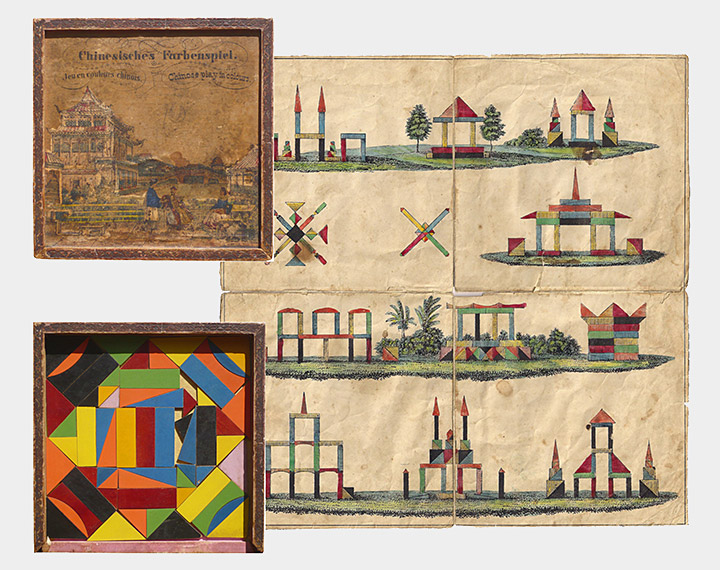
So-called Chinese color placement game with template from around 1870
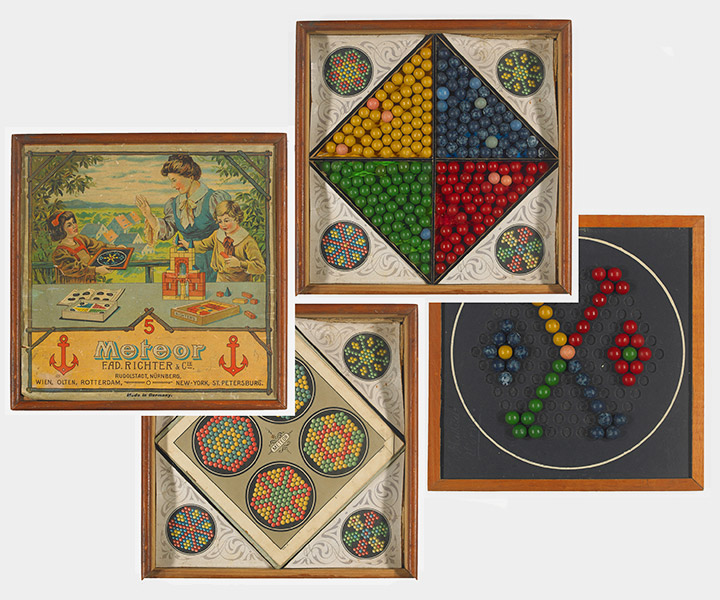
Meteor ball game with templates around 1890 - 1910
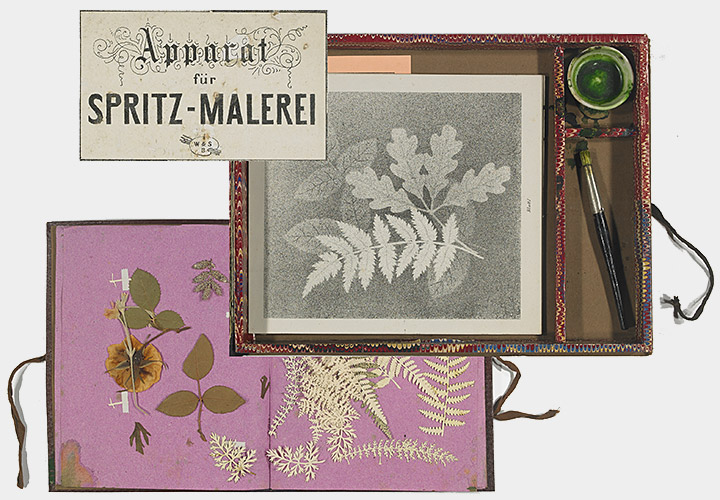
So-called Apparatus for Spray Painting equipped with sieve, brush and stencils, which were to be supplemented with pressed natural leaves (around 1890)
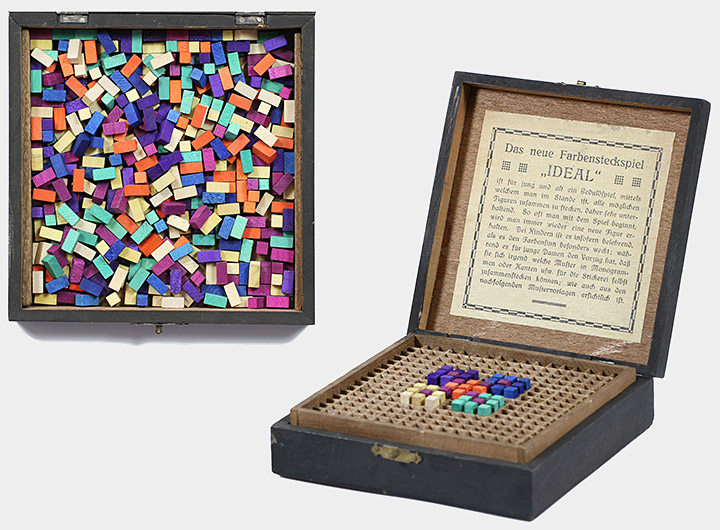
"Ideal" color combination game for ornament patterns, around 1890
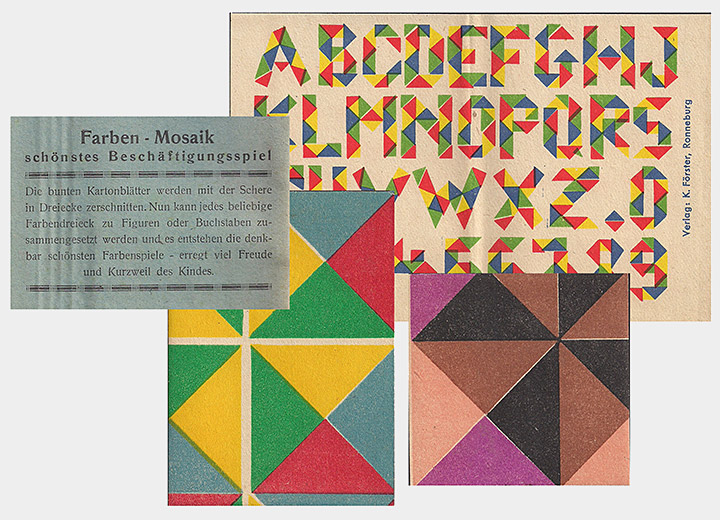
Color Mosaic with color samples to cut out, around 1900
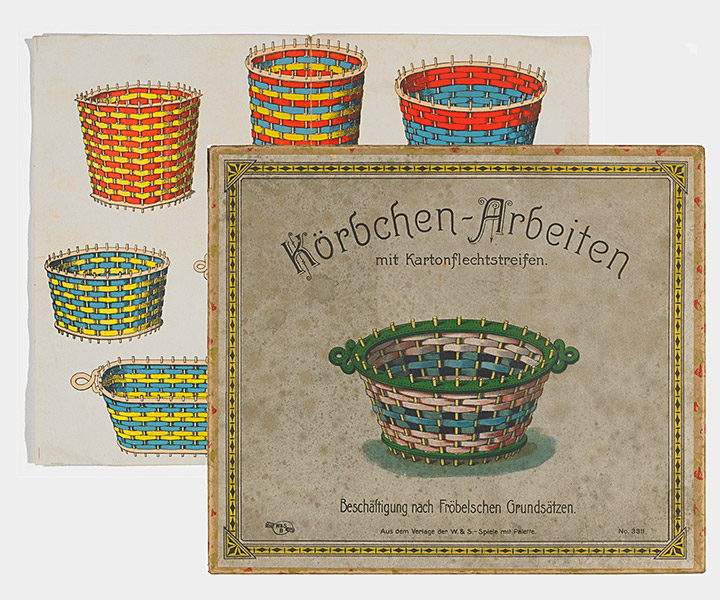
"Basket Work" by the company W & S after Froebel, approx. 1910
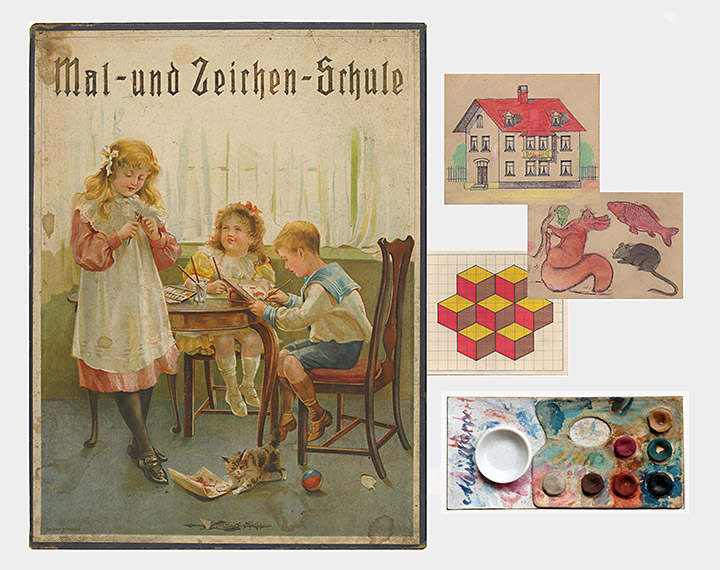
“Painting and drawing school” by the Nuremberg manufacturer Spear with templates and a palette from 1916
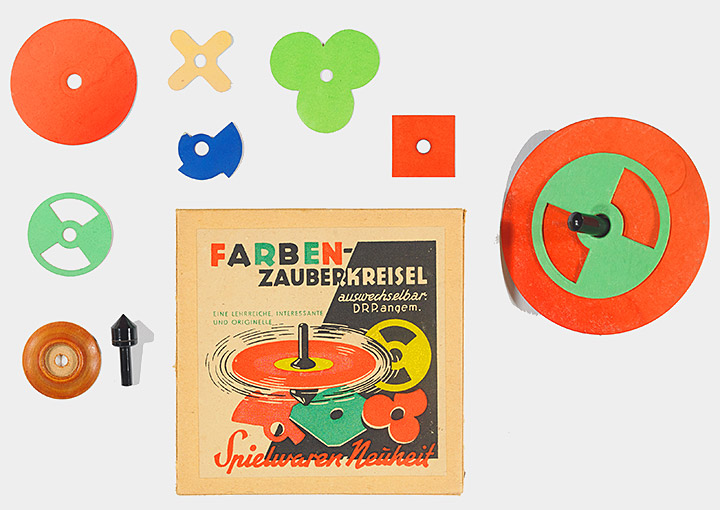
“Magic Color Top” by Lilly Eberhard, 1929
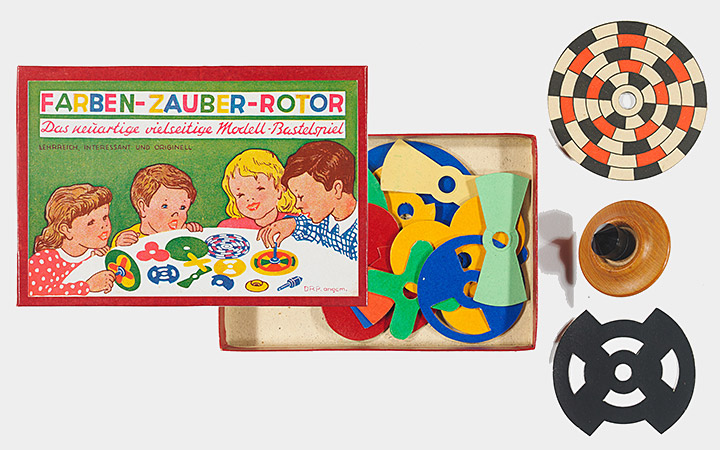
"Magic-Color-Rotor" by Lilly Eberhard, 1931
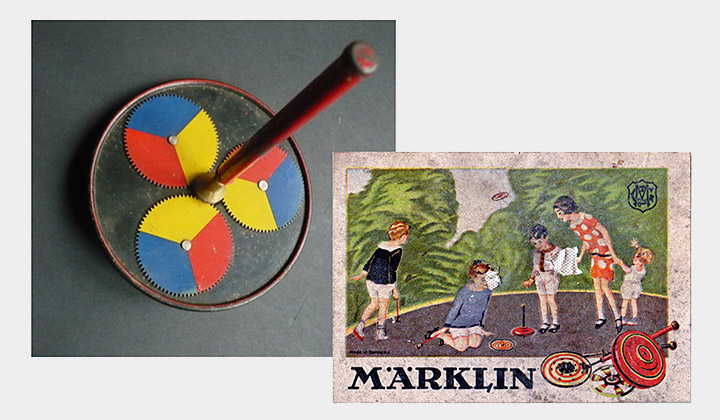
Colortop from the Märklin company, 1930s
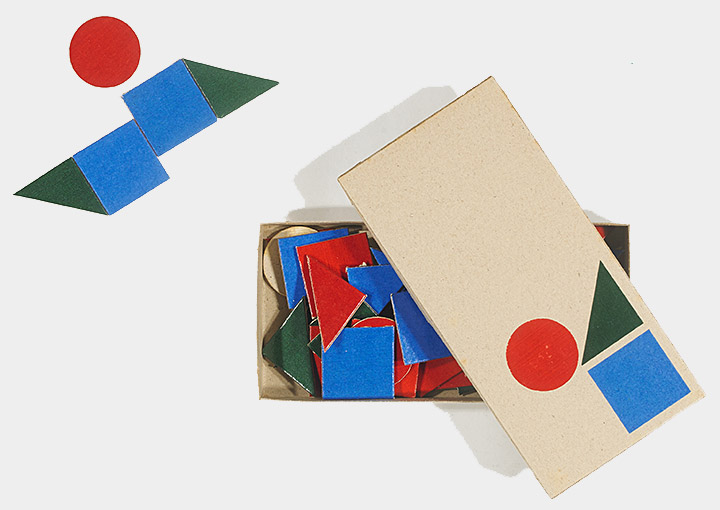
Graefe’s combination game, 1940-50s
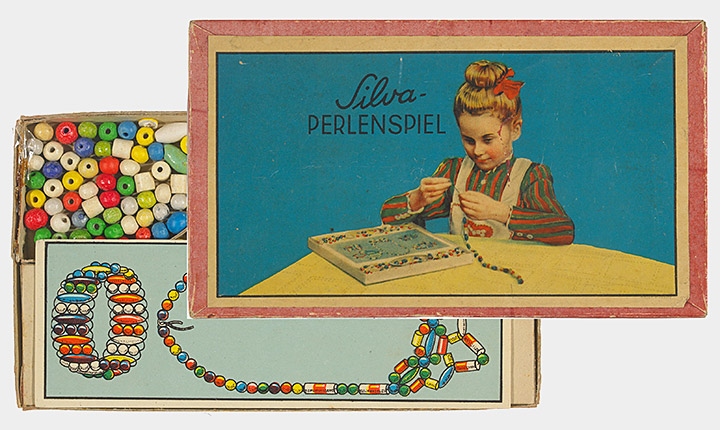
Sylva pearl game, 1950s


